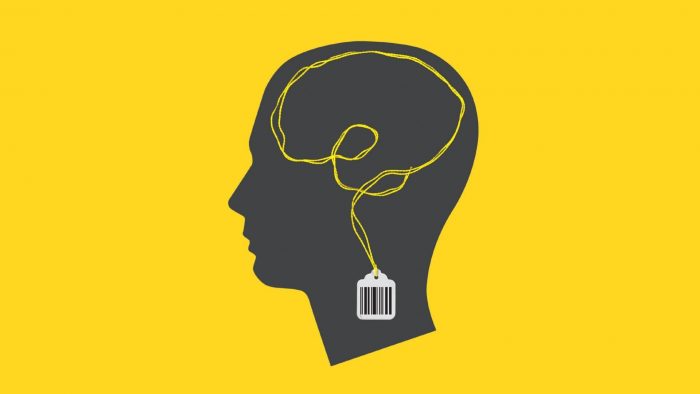Nowadays, marketing has become even more transparent for content marketers since the advancements in technology now allow us to map the consumer journey to the most minor of details. You can see how the content is affecting the audience and whether it is prompting them to buy your product or not. What this allows you to do is to ask more questions about consumer behavior, and how you can make use of the consumer’s emotions for creating effective content that convinces the customers to make a purchase.
If you would like to know how you can get more customers that are eager to buy your products, then you need to understand the consumer buy-ology. As fancy as that sounds, it is actually a lot simpler than you think. There is no need for hypnotizing or manipulating customers into buying your products, you just need to give them what they want! The key to success with this is to understand the consumer’s psychology – know why they are saying no instead of yes – and make use of emotional triggers for driving actions that you want.

Here are four simple yet effective sales strategies that content marketers can use for driving potential customers into purchasing your product:
1. Explain The “Why” Behind The Purchase:
When someone tells you to do something, the first thing that comes to your mind is a ‘why’. The same applies to consumers, as well. When you drive consumers to take an action (such as a purchase), you need to tell them what they would get out of it or the WIIFM factor (what’s in it for me?).

2. Make Use Of The Common Enemy:
There is no better ‘actionable’ emotion than anger and hate – by this, we do not mean that you instill violence in your consumers but instead, create a common enemy that gets the consumers fired up for investing in your products.
For instance, if you are a natural-ingredient skin care business then you can let the consumers know that the root cause of skin problems are the chemicals that are found in other skincare products. Create the common enemy and then ally with the consumers against it to create a loyal consumer base.
However, be careful not to engage in brand-war or to target a specific brand.

No matter what the niche of your business, there has to be a common enemy for the audience, something that they believe is the reason behind them not getting what they want. What you need to do is to identify it and then unite the consumers against this common enemy.
This step requires thorough research into the target industry and the consumer’s behavior patterns towards products/businesses in the niche. Be careful with this particular emotional trigger though since you should not end up causing people to dislike your brand. It is also worth mentioning here that when you unite people against the common enemy, you will end up having enemies, as well. However, you can avoid this by staying away from religion, race, brand names, and politics when you define the enemy – be general and look for something that most people believe to be a common enemy.
3. Leave Them Curious:
The curiosity in our minds is something that inspires us to take action so that we can get rid of it and when we find what we are looking for, we feel pleased. Curiosity is a vital emotion that you can use when marketing to consumers and driving them toward your call to action.
The key here is to leave them with a ‘teaser’ and prompt them by saying that the answer to what they want to know lies beyond your call to action.

Now, what steps can you take for piquing the curiosity of the audience? There are several methods for approaching this and at the centre of them is ‘missing information’. However, what is important here is that this incomplete information should be about something that the customers are interested in and something that they want to read about.
Let us inspect a few examples to further illustrate this:
- The driving force of human behavior is pleasure and satisfaction – what prompts us to take action is the desire to achieve something that we want. One way of leaving the consumers wanting more is to make use of this force. Give them a preview of how they can achieve the desired results through your products.
- Creating controversy is another good way of piquing interest – say something that opposes the norm and makes people believe that you know a ‘secret’ that they don’t. Controversy piques curiosity and urges people to take action for finding out ‘if they were wrong’ about something. TravelMath makes use of this in the example below and prompts people to ‘rethink’ by highlighting how ‘dirty’ hotel rooms actually can be and eventually drives people to use their service for finding hotels in the future.

- One more way of developing curiosity is by asking questions that the audience is asking. You can ask the relevant questions such as “What are we doing wrong with our content marketing strategy” and then link it directly back to content on your website that has a call to action. This will drive organic website towards your call to action which equates to a higher chance of conversion.
4. Market Trending News, Surveys & Culture To Attract Your Consumers:
Neurologically, it has been proven that the latest trends and happenings drive people to take action and seek something. The idea of something new inspires the feeling of something being unfamiliar and undiscovered which leads to anticipation. This releases a chemical known as dopamine in the human brain which pushes people to be attracted to a latest happening or a newly released product.
You can leverage this by building a social media strategy around it – be the first in the industry to discover, share, and analyze (if possible) news. Track down the latest trends and let the audience know about it and then link back to your website. This will improve the chances of conversion since people prefer brands that stay up to date with and share the latest news.
5. Use “Urgency” To Get People To Buy:
Deadlines not only make us productive but they can be used to trigger a sense of urgency in the customers. Take, for example, an ad or a pop-up that says “Hurry, sale ends today” or a timer which shows the hours left for any particular sale can work effectively in persuading the customer to buy the product.
Conclusion:
The consumer journey is all about understanding the consumer’s emotions and utilizing them for increasing revenue. Human beings are driven by their emotions and there is no better way of driving your customers towards taking action or making a purchase than by leveraging on this fact. While there are numerous other tactics that you can use for altering consumer behavior, we have highlighted some of the most simple and effective ones that will drive your business towards increased sales and positive results.
Find a Home-Based Business to Start-Up >>> Hundreds of Business Listings.
















































